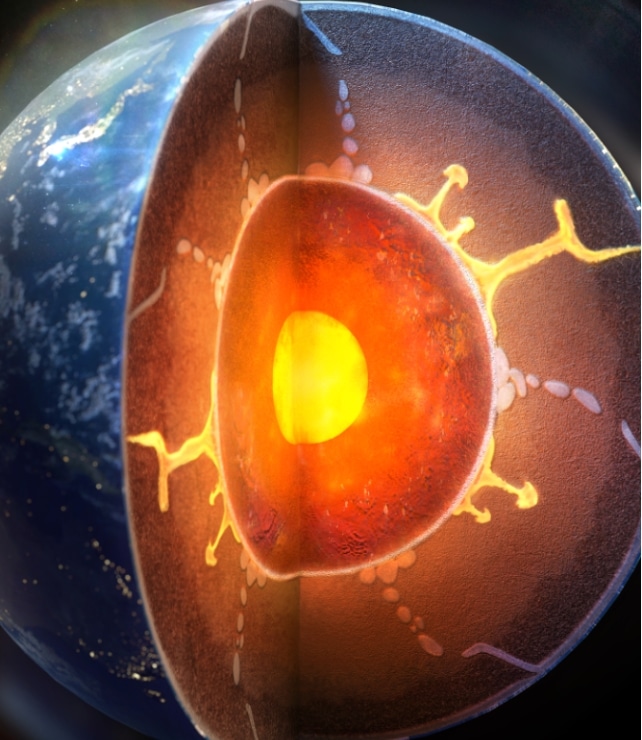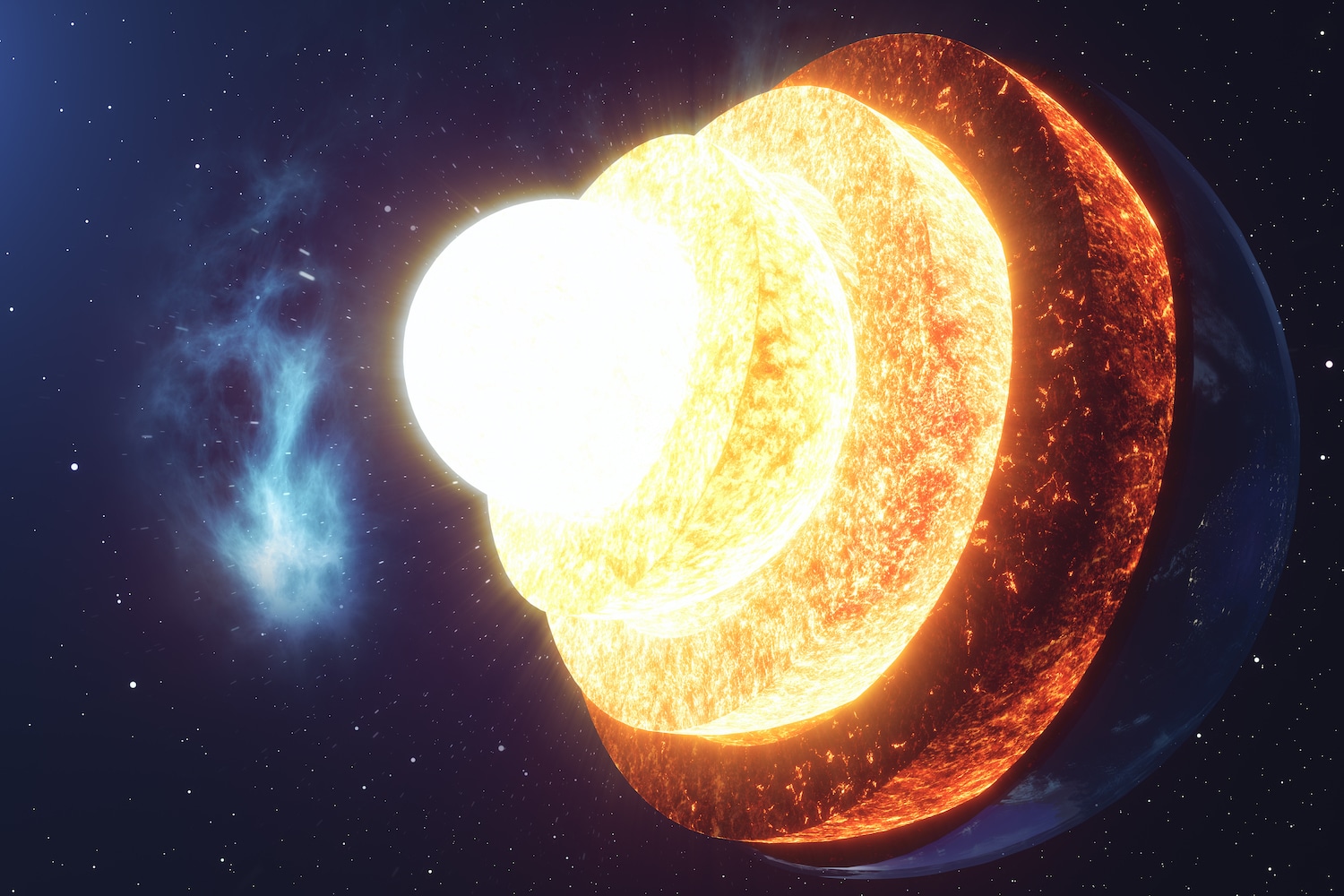Water, an essential component of our planet, makes an extraordinary journey from Earth’s surface to its core. This journey profoundly affects the internal mechanisms of the planet. The Earth’s crust, a dynamic mosaic of tectonic plates, plays a crucial role in this process.
When these plates move and slide under each other in subduction zones, they transport water into the lower mantle over billions of years. This movement of water to the boundary between the core and mantle, at a depth of about 2,900 kilometers below the surface, causes a strong chemical reaction, leading to a radical change in the outer region of the core.
The chemical force of water within the Earth
Recent research conducted by teams from South Korea, the United States and Germany has shed light on this mysterious process. “For many years, it was thought that material exchange between the Earth’s core and mantle was minimal,” explains materials scientist Dan Shim of Arizona State University. However, our experiences under high pressure reveal a different story. These experiments show that water, when it reaches the boundary between the core and mantle, reacts with silicon in the core to form silica. This reaction creates a hydrogen-rich upper layer of the nucleus, effectively changing the composition of the nucleus.
The core is made of iron and nickel, which is crucial in generating the Earth’s magnetic field. This magnetic field acts as a shield that protects life on Earth from harmful solar winds and radiation. Therefore, understanding nucleus formation and evolution is vital. The core-mantle boundary represents an abrupt transition from silicate to metallic, and much about the chemical exchanges at this stage remains unknown.
Decades of studies of seismic waves through the Earth’s interior have revealed a thin layer called E prime, only a few hundred kilometers thick. The origin of this layer has remained a mystery until now. “We propose that the formation of the initial E layer can be attributed to chemical exchange between the core and mantle, driven by deep-water transport over the Gigayear range,” the research team notes.
Seismologists have observed unusual features in this layer, indicating that it is less dense and has slower seismic velocities. This discrepancy is thought to involve differences in the concentrations of light elements such as hydrogen or silicon.

Implications and future perspectives
The interaction of water with core materials, as demonstrated by the use of laser-heated diamond anvil cells that mimic the boundary conditions between the core and mantle, reveals that submerged water can react chemically to transform the outer layer of the core into a hydrogen-rich layer. film.
This reaction also disperses silica crystals that rise and join the mantle. As a result, a layer of hydrogen-rich, silicon-poor material forms over the core, consistent with features observed in seismic waves.

This discovery not only sheds light on the nature of the primordial E layer, but also points to a global water cycle that is more complex than previously thought. “Our findings, combined with our previous observation of diamonds formed by the reaction of water and carbon in liquid iron under extreme pressure, suggest a dynamic core-mantle interaction with significant material exchange,” Shim adds. This information opens new horizons in our understanding of Earth’s internal dynamics and the deep water cycle, expanding our knowledge of the planet’s complex systems.
This revolutionary study published in Natural Earth Sciencesunveils another layer of Earth’s deep secrets, reminding us of the ongoing evolution and complexity of our planet.

“Coffee trailblazer. Social media ninja. Unapologetic web guru. Friendly music fan. Alcohol fanatic.”

